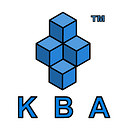Exploring the Synergies Between DePINs and the DeFi Ecosystem
By Anju B Nair, Sr. Technical Content Writer, Kerala Blockchain Academy
The blockchain revolution has fostered two groundbreaking innovations that are reshaping industries: Decentralized Finance (DeFi) and Decentralized Physical Infrastructure Networks (DePINs). While DeFi unlocks financial opportunities and empowers users to manage their wealth autonomously, DePINs revolutionise how physical infrastructure is deployed, owned, and operated. These two ecosystems may seem distinct, but their potential convergence could redefine how we interact with the physical and financial worlds.
The Intersection of DePINs and DeFi
The synergy between DePINs and DeFi lies in their shared ethos of decentralisation and empowerment. By integrating DeFi capabilities into DePINs, stakeholders can unlock new layers of financial utility, sustainability, and growth. Let’s unlock a few exciting possibilities.
1. Incentivising Participation
DePIN networks thrive on user contributions — whether it’s bandwidth for Helium or storage for Filecoin. DeFi can supercharge these incentives by offering yield-bearing mechanisms or liquidity options for the rewards earned within DePIN ecosystems. For example:
- Staking and Liquidity Pools: Participants can stake their DePIN tokens in DeFi protocols to earn additional rewards or provide liquidity, enhancing token utility and demand.
- Token Collateralisation: DePIN rewards can be collateralised to secure loans in DeFi platforms, providing liquidity to participants without requiring them to sell their tokens.
2. Tokenised Infrastructure Financing
One of the challenges DePINs face is raising capital to deploy infrastructure. DeFi can address this through tokenised infrastructure financing:
- Crowdfunding Through DeFi Protocols: Projects can issue governance or utility tokens to raise funds while engaging a community of stakeholders.
- Yield Farming for Network Growth: DeFi yield farming strategies can be used to bootstrap user participation and incentivise early adopters of DePIN networks.
3. Cross-Network Utility
DePIN tokens can find extended use cases within the DeFi ecosystem. For instance:
- Interoperability with Layer-2 Solutions: DePIN tokens can be integrated into DeFi protocols operating on layer-2 blockchains, ensuring faster transactions and lower costs.
- Payment Mechanisms: DePIN tokens can serve as native currencies within DeFi marketplaces, seamlessly blending physical and financial interactions.
4. Data Monetisation and Lending
The data generated by DePIN networks — such as IoT sensor readings or usage patterns — can be tokenised and monetised through DeFi protocols. This approach benefits participants by unlocking the value of data without compromising privacy.
Challenges to Consider
Despite the immense potential, integrating DePINs and DeFi is not without challenges:
- Regulatory Uncertainty: Both DeFi and DePINs operate in gray areas of regulation, which could impact their convergence.
- Scalability and Interoperability: DePINs often require real-time transactions, which can strain existing blockchain networks.
- User Education: The complexity of both ecosystems necessitates user-friendly solutions and educational initiatives to drive adoption.
Can DePINs be a catalyst for efficiency, security, and inclusivity in the DeFi ecosystem?
Physical assets managed by DePINs can be made traceable on the blockchain, ensuring accountability in the proceeds. The increased transparency can, therefore, attract more users and institutional investors to DeFi, fostering trust and broader adoption.
>> Community-Driven Governance and Development: DePINs often employ decentralised governance models, allowing communities to have a say in the development and management of infrastructure. It democratises infrastructure investment by opening projects to a broader range of investors, making opportunities that were once exclusive to large corporations and institutional investors accessible to smaller investors. For instance, Energy Web uses EWT tokens to invest in renewable energy, broadening investment opportunities. Integrating these governance models thus with DeFi platforms can foster community-driven innovation and decision-making. This synergy can empower users and promote sustainable development within both ecosystems.
>> Regenerative & Sustainable Finance
DePIN projects are said to promote sustainable finance by encouraging the use of renewable energy and eco-friendly infrastructure. DePIN tokens can be used in carbon markets, helping companies offset their emissions by investing in renewable energy projects. For instance, a decentralised energy grid could tokenise excess energy production, allowing users to trade energy credits on DeFi platforms. This can not only enhance liquidity but also provide asset-backed stability to DeFi markets.
>> Decentralised Oracles for Real-World Data
DePINs can serve as decentralised oracles, providing real-time data from the physical world to DeFi smart contracts. For example, a decentralised transportation network could supply data on vehicle usage, enabling usage-based insurance products or dynamic pricing models in DeFi applications. This integration ensures accurate, tamper-proof data, enhancing the reliability and functionality of DeFi products.
The Future of DePINs and DeFi
As DePINs expand their physical presence and DeFi continues to innovate, their convergence could redefine economic models across industries. Imagine a world where individuals earn passive income by contributing to decentralised infrastructure while simultaneously accessing decentralised financial services to grow their earnings. Blockchain-powered smart cities, decentralised energy grids, and autonomous vehicles could all operate seamlessly within a combined DePIN-DeFi framework. By aligning incentives, enhancing accessibility, and creating novel use cases, the synergy between these two ecosystems could hold the promise of a more inclusive and equitable digital economy.
Conclusion
DePIN is poised to revolutionise the Web3 ecosystem by decentralising infrastructure management and promoting cryptocurrency adoption. It has the potential to democratise infrastructure projects, thus reducing the costs and challenges of monopolies benefiting users, providers, and projects alike. As we envision a future where resilient, efficient, and community-driven infrastructure thrives, DePIN may tomorrow stand as a testament to the transformative power of decentralised technology. We strongly believe in technical narratives. Do you???
